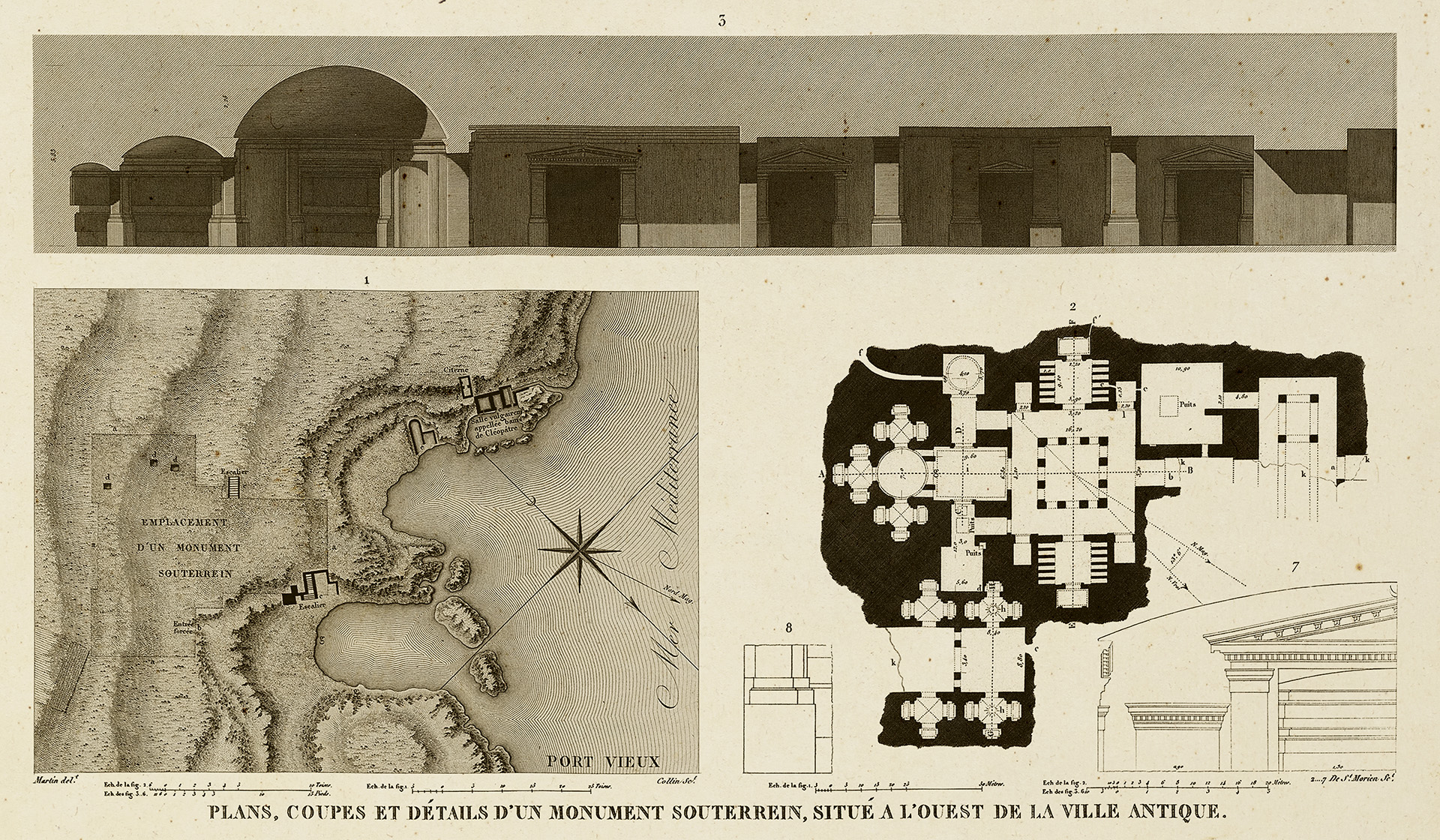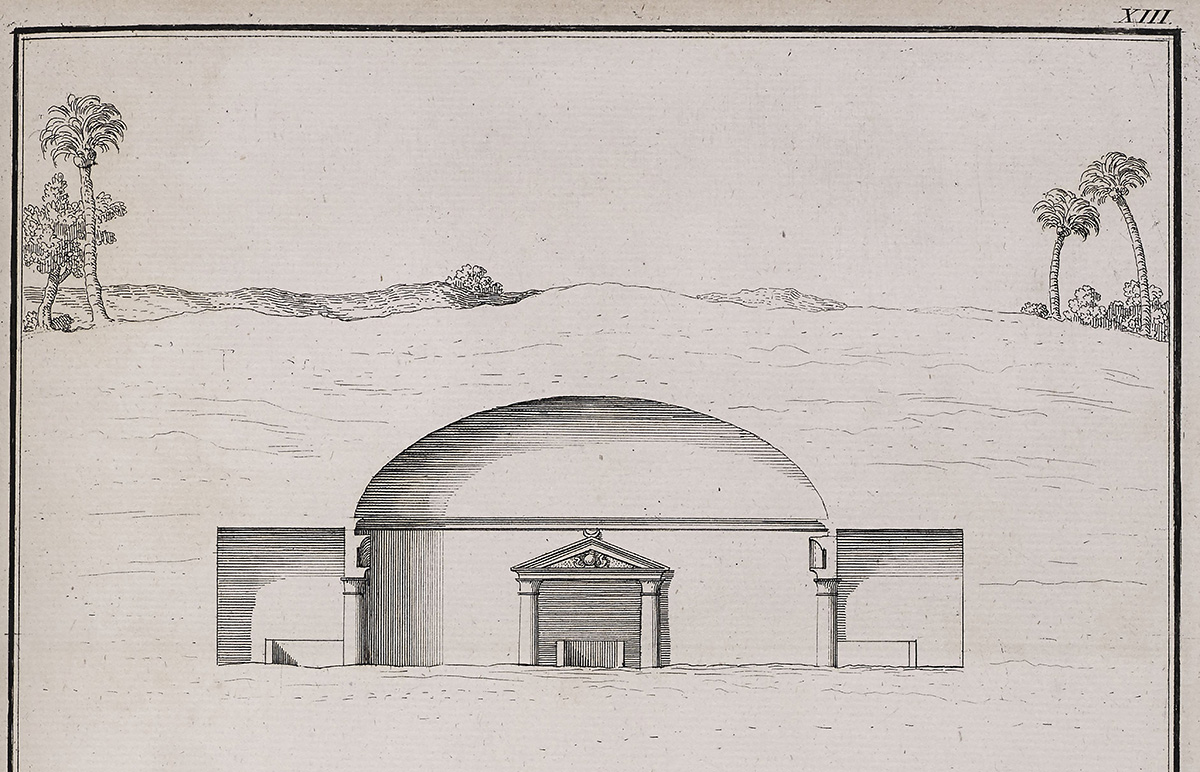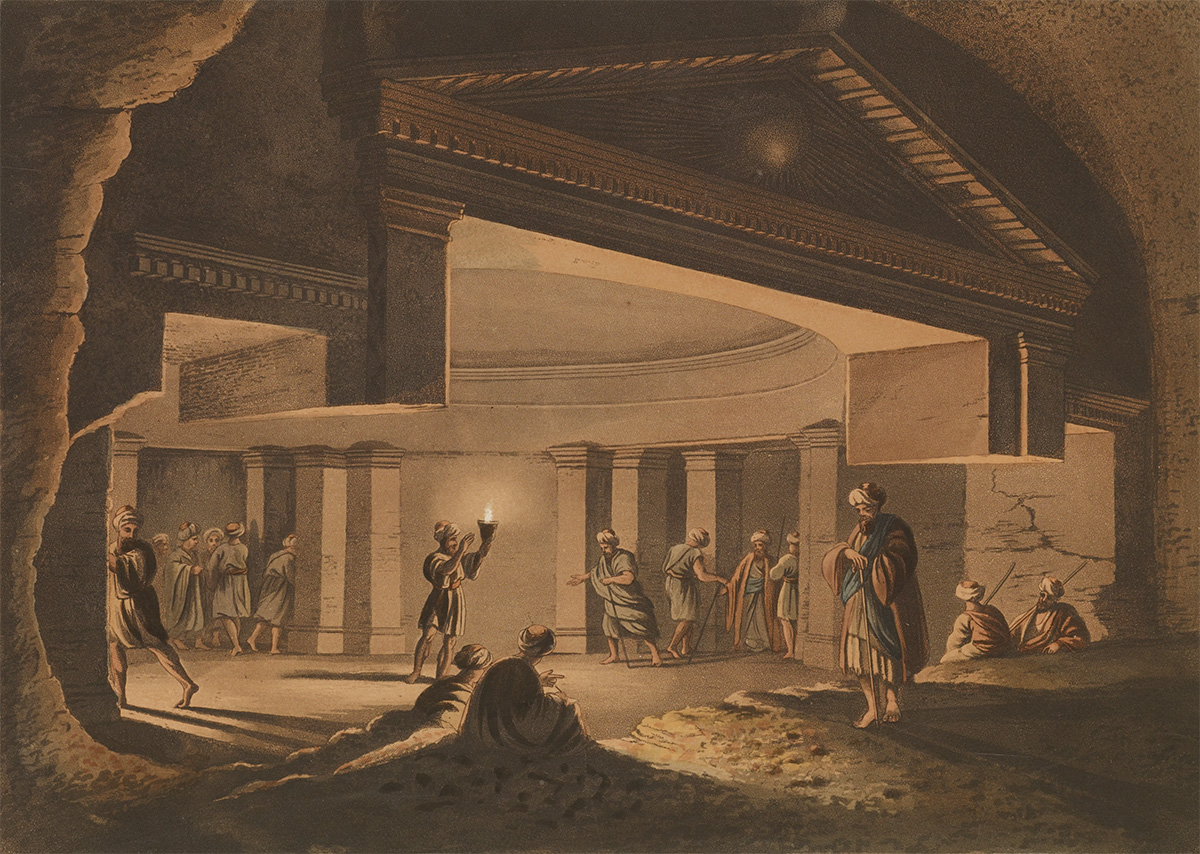Daily life
Attarine Pompey’s Pillar Tower of the Romans Cleopatra’s Needles Tombe de Wardian Qaitbay Fort
“Plans, sections and details of a subterranean monument, located to the west of the ancient city”. Intaglio engraving, Pierre-Dominique Martin, illustrator, Yves-Dominique Collin, de Saint-Morien, engravers, Description de l’Égypte, Antiquités, Planches, Vol. 5, pl. 42.1-3
In December 1799, Martin, accompanied by Faye, carried out a survey of this “subterranean monument”, located in what is today the district of Wardian in the western suburbs of Alexandria. It is one of the largest known hypogea in Alexandria. Carved out in one piece at the beginning of the 1st century AD, it is striking for its grandiose axial architecture (67 m long), with a large peristyle courtyard opening on two sides onto rectangular rooms with loculi and on the third onto a vestibule leading to a large rotunda which, in turn, leads to other rooms with sarcophagi. Although visited by Bonaparte’s soldiers, who left their names there, this tomb was forgotten by Alexandrians until 1952, when it was rediscovered by Achille Adriani. The monument still exists today, but is not open to the public.



